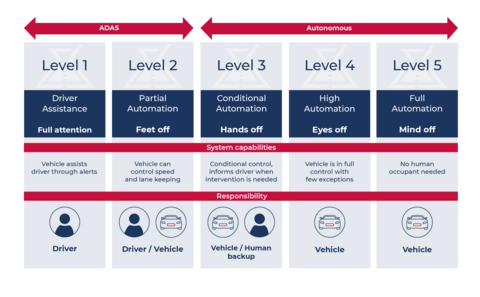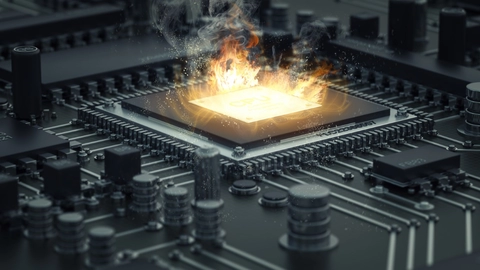
The hidden barrier to Level 5 vehicle autonomy
contact us

“Materials are the bedrock of the systems that enable driverless vehicles”
It is no exaggeration to say that the world of automotive is experiencing a period of profound disruption, one that has the potential to transform the industry beyond all recognition. We’ve come a long way since the creation of the first successful electric car model in 1890, and there is now a common admission that the days of internal combustion engines are numbered and that new forms of propulsion are required.

OEMs are increasingly looking to deliver a wider array of technology, and with each passing year, we edge closer to a new era in automotive and ultimately, the holy grail of fully autonomous vehicles. With a number of experiences ranging from robotaxi services to fully autonomous trucks already in the trial phase, it’s hard not to get excited about this new frontier. That said, we must temper our expectations with a realistic view of just how far we are from Level 5 – or even indeed, Level 3 and 4- vehicle autonomy.
We must overcome a whole series of obstacles before we see widespread adoption of driverless vehicles. While the regulatory, attitudinal, and at-scale commercialization challenges dominate much of the discussion, we must not underestimate the importance of physical materials within this journey.
Materials are the bedrock of the systems that enable driverless vehicles, and unless they can withstand the operational demands of increasingly complex ADAS technology , the road ahead may be longer and more challenging than expected.

When learning to drive we’re taught to keep both hands tightened around the steering wheel in the “ten to two” position. When our survival and safety are dependent on our ability to keep control of a vehicle, the idea of letting go of the steering wheel is somewhat counter-intuitive.
Humans have a need to feel in control, no matter how flawed our judgment and decision-making capabilities may be. In surrendering complete control to an autonomous vehicle, we are fighting against the very instinct for survival that has kept our species safe since time immemorial.
This requires a huge leap of faith, and to create demand for autonomous vehicles, there must be a concerted effort to galvanize the perception that the technology is safer than what we currently have. This is a gradual process and advancements in the technologies which optimize human safety will play a decisive role in changing attitudes towards autonomous vehicles.
The technology required to support driverless vehicles is yet another hurdle for the automotive industry. On a hardware level, we are yet to see, on a mass scale, the level of performance needed in sensing technologies and actuation or high-performance computing.

Where software is concerned, perception and prediction software still has some way to go before we reach the required levels to support Level 5 autonomous vehicles. Despite this, automotive manufacturers can start to ready themselves for when these arrive.

We already know that the processing power required to support ADAS applications is steadily increasing, which generates internal excess heat. As these systems continue to advance and become central to overall vehicle reliability and performance, the issue of heat management comes into sharp focus. Thermal concerns transition from external, such as near the engine or on the chassis, to internal, such as those created through high processing or increased power.
Materials that can facilitate thermal dissipation are instrumental in ensuring the safe operation of autonomous vehicles. Without this capability, all other changes required to sustain driverless vehicle technology are irrelevant, since there will be no way to ensure the reliable operation of vehicles.
“The issue of heat management is in sharp focus whether from external, such as near engine or on the chassis, to internal, such as those created through high processing or increased power.”

The heightened risk of failure underlines the need for proportionate investment in proper materials, a choice that can withstand the future demands of ADAS packages. In this often overlooked yet vital area, MacDermid Alpha Electronics Solutions is already ahead of the curve and delivering materials that are ready for advanced levels of vehicle autonomy.
It is impossible to predict the exact timescales within which Level 5-ready vehicles will become the norm. This journey will be more akin to a marathon than a sprint and while there are various challenges for us to navigate along the way, complacency around our ADAS materials should not be one of them. Getting this right now is vital and will support a smoother transition to the autonomous future that we can only dare to believe is possible.
Click here to learn more about how MacDermid Alpha Electronics Solutions ADAS solutions are helping to shape the future of autonomous vehicles, or read our recent article; why the materials matter.